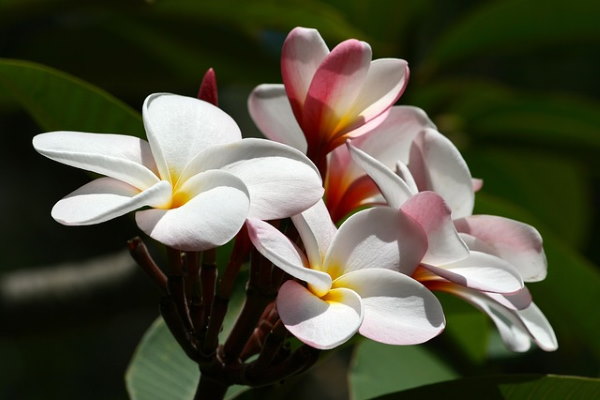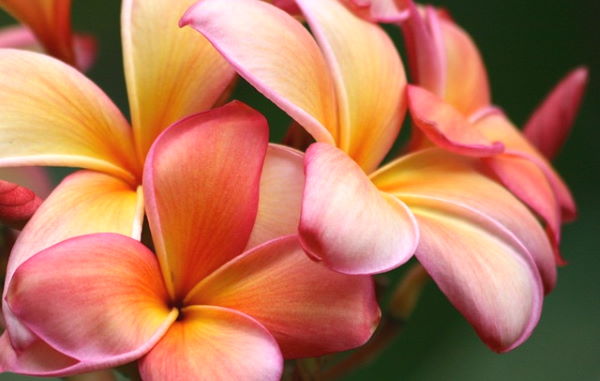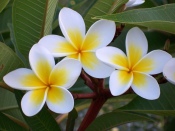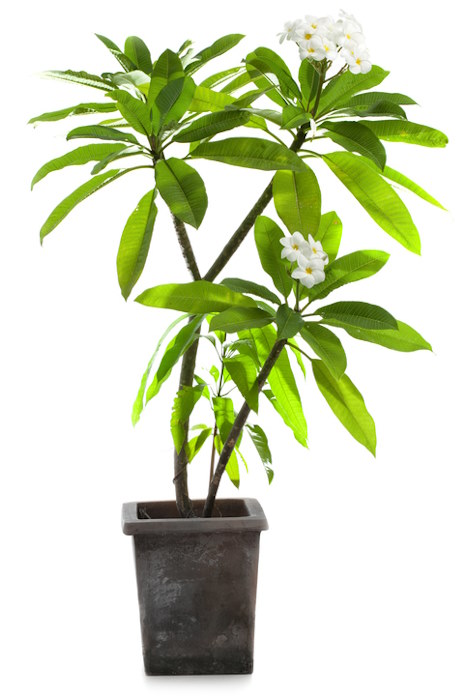Plumeria Care: How to Grow Fragrant Frangipani Tree Indoors
Plumeria care is easy as long as you can meet its needs for warm sunshine and humidity. It is well worth the effort. Showy, fragrant blossoms will add just the right touch of tropical charm to your home.
Here you'll discover how to grow this captivating shrub indoors, when to repot, how to overwinter your plant, why you'll want to prune it, plus how to coax the most flowers, and more.
 Plenty of sunshine will bring on the Plumeria flowers. Image by Candace Thoth
Plenty of sunshine will bring on the Plumeria flowers. Image by Candace ThothGet to Know Plumeria Rubra
Known botanically as Plumeria rubra, this beautiful tree is native to Central America. Vigorous and a prolific bloomer, plumeria makes a beautiful potted houseplant.
How big does it get? You can expect your houseplant to reach a height of up to 10 ft (3 m) in a container. Controlling its size is easy with regular pruning. See care tips below to find out when and how to do it.
Thick, woody branches carry pointed leaves that grow 6-12 inches (15-30 cm) long.
Big clusters of 20 to 50 flowers grow like bouquets on branch tips from early summer through fall. Plumeria flowers are each made up of 5 overlapping petals. The waxy blooms are about 2 in (5 cm) wide and are available in many shades of pink, red, yellow or white -- or any combination.
These flowers are among the most fragrant of any tropical flowering plant. Its essential oil is commonly used as fragrance for perfume, lotion, candles, and other scented products. Plumerias are a common sight in Hawaii, where the fragrant plumeria flowers are used to make flower leis.
This Central American native prefers bright light and moderate humidity. If you can give plumeria care that it needs, you'll enjoy this spectacular tropical houseplant in your home for many years.
 Colorful clusters of flowers decorate Plumeria in summer. Image by Candace Thoth
Colorful clusters of flowers decorate Plumeria in summer. Image by Candace ThothYear-Round Plumeria Care
Repot young plants in spring when their roots have filled the container. Move it to a pot only one size larger. When planting plumeria, care should be taken to choose a pot with drainage holes to prevent root rot. Is it too big to repot? You can top-dress it instead by removing the top 2-3 inches of soil and replacing it with fresh soil.
Prune it back. You can control its size and encourage plumeria to branch out by regular pruning. Flower clusters grow from the branch tips, so you'll get more flowers this way. Cut at a 45° angle, just above a node (the place where a leaf or branch is attached to the stem). Use sharp pruners to avoid tearing the stems. Cutting plumeria branches back by 1/3 won't hurt it at all -- this is a vigorous plant. Prune in late winter or early spring.
Give it a winter rest. Plumeria rubra will go dormant in the winter months, shedding its leaves and requiring a cool rest. Put it in a cool room -- a basement or garage is ideal as long as the temperature doesn't drop below 55°F/13°C. Water sparingly and stop fertilizing until new growth begins in spring.
Watch for pests. Keep an eye out for spider mites, particularly in winter when conditions are dry. These pests are so tiny, you'll likely only notice their fine webbing between stems. Isolate an infested plant and treat it right away. Raising the humidity near your houseplant will help to deter these pests.
 |
 |
 |
Buying Tips
Although it's sometimes called a frangipani tree, this tropical plant is actually a shrub. Out of 300+ species of Plumeria, rubra is the best for growing indoors.
You'll find plumeria for sale in spring and summer. You have quite a few cultivars to choose from -- in brilliant colors and dazzling combinations.
'Candy Stripe' has spectacular yellow-and-pink striped petals. Vibrant 'Hot Pink' is a popular cultivar. 'Cancun Pink' is soft pink and a prolific bloomer.
 Image credit © Goldmund | istock
Image credit © Goldmund | istockIndoor Plumeria Care Tips
Light: Plumeria care requires bright light to full sun. Plants that don't bloom aren't getting enough sunlight. Growing plumeria require at least 5 hours of direct sunlight each day.
Water: Keep soil evenly moist spring through fall. Water sparingly in winter, when plant is resting. Yellowing leaves are a sign of overwatering.
Humidity: Try to maintain 40-50% relative humidity. Use a cool-mist room humidifier to raise the humidity around the plant. Misting is also a good idea in summer. With plumeria care should be taken to mist the foliage, not the flowers.
Temperature: Average to warm 65-80°F/18-27°C. It will tolerate high temperatures, but if you move it outdoors for the summer, bring it back inside if the temperature drops below 55°F/13°C at night. It's tropical, not hardy.
Soil: Peat moss based potting mix.
Fertilizer: Feed spring through fall with high-phosphorous fertilizer to promote blooming.
Propagation: Take 10 in (25 cm) stem tip cuttings in spring. Allow the cut ends to dry for 5-7 days, to prevent the sap from oozing out, before planting in potting medium.


